Wood vs. Tile Floor: The Differences Explained
-
Ed Malaker
- Last updated:
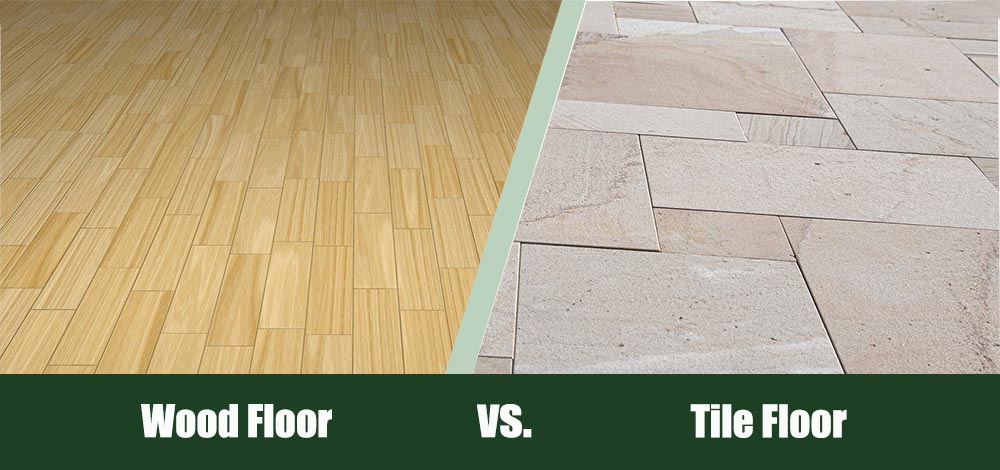
Two of the most popular types of flooring are tile and hardwood, and you will often hear homeowners struggling to decide which type to install in their houses. If this sounds like your situation, you are in luck. Here, we list the pros and cons of both and discuss what kind of environment each is best suited for to help you make an informed decision.
Overview of Wood Flooring
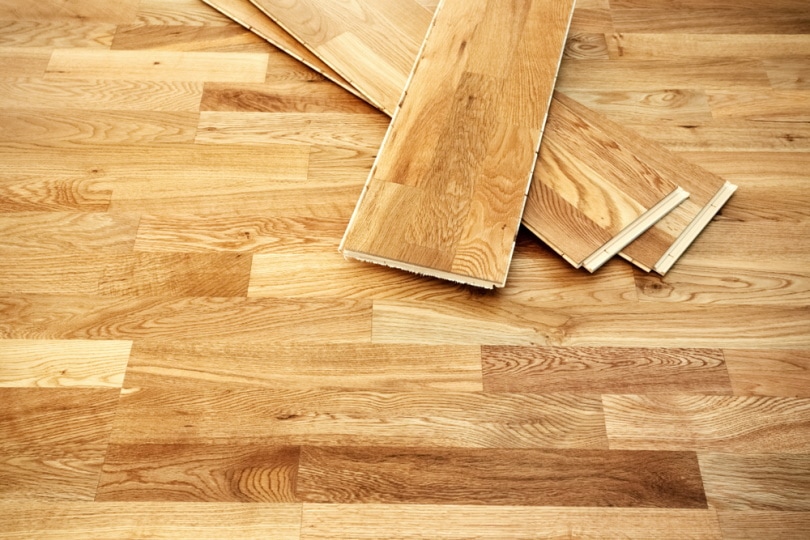
What it’s good for
Wood has many great benefits when you use it for flooring. It’s attractive and can give the room a rustic or traditional feel. Many different types of wood, including cherry, walnut, oak, and maple, will affect the color, grain, and hardness of the floor, so there are many options available. Wood also helps make a room feel warmer than tile can and provides better traction. One of the biggest advantages a wood floor has over tile is that it is easier to repair and replace should you need to.
The downside to wood is that it isn’t as durable as tile and can often start showing signs of wear in just a few years, though it will usually last a long time. Wood floors can also be harder to clean, especially as they start to wear out, as scratches and dents can trap and hold dirt, grime, and even bacteria. Another downside to wood is that it is usually much more expensive than tile.
When to choose
Wood is a good choice for flooring almost anywhere in the home, including bedrooms, living spaces, kitchens, dens, and hallways. The only place that you won’t usually see a wood floor is in the bathroom or basement.
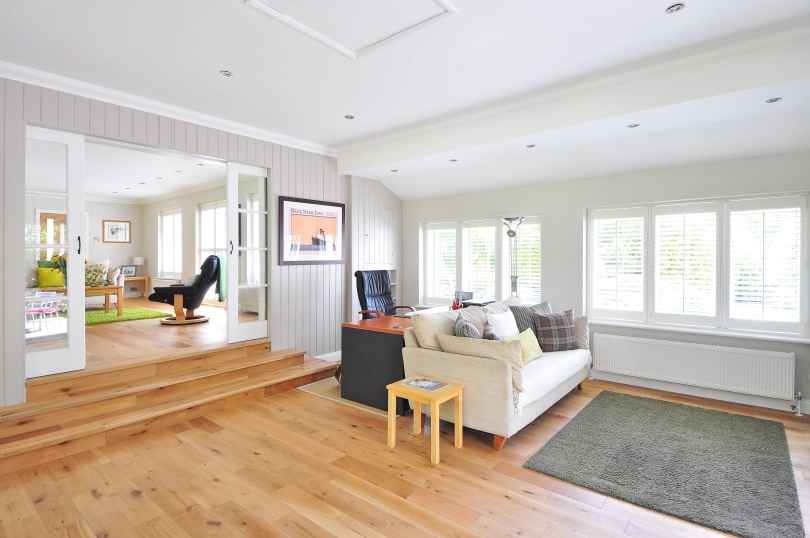
- Warmer than tile
- Better traction
- Easier to replace
- Not as durable
- Harder to clean
- More expensive
Overview of Tile Flooring

What it’s good for
Tile has far more color options than wood, and you can even get it in complex patterns, enabling you to create flooring to suit any environment and taste. Tile is also less expensive than wood, so the installation can cost far less. It’s extremely durable, often showing no signs of wear and tear even after several years of use. It’s also easy to clean, and most kinds of tile are water-resistant. Certain kinds of tile, like porcelain and glass, are even suitable for use in the shower and other wet environments.
The biggest downside to using tile flooring is that it is a permanent decision. Since you essentially install the tile in concrete, you will need to use a jackhammer to smash up the floor if you want to switch to wood or something else later, which can be quite expensive and messy. Another common complaint about tile is that it can be much slipperier than wood, especially when it gets wet, but some floor tiles will have a texture that can help reduce slipping.
When to choose
Tile is a material that will work well anywhere in the home, especially in the bathroom and basement, where you can’t use wood. However, since many people feel that it makes the environment cold, they use it less often in bedrooms and living spaces.
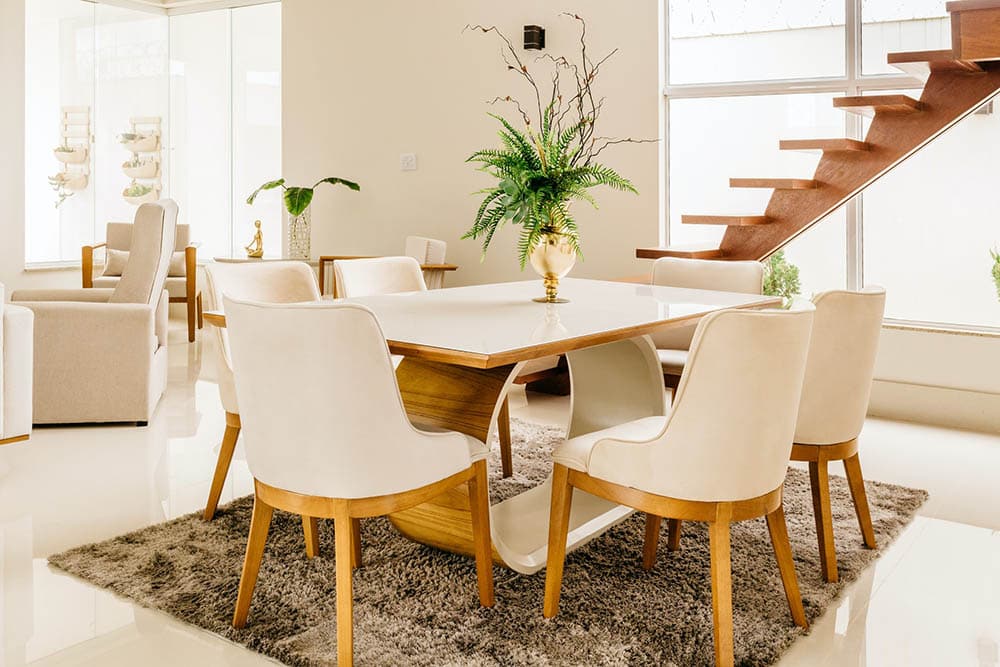
- Water resistant
- Less expensive than wood
- Extremely durable
- Many patterns and colors
- Easy to clean
- Hard to replace
- Slippery
When to Use Each
Tile
We recommend choosing tile for high-traffic areas where people wear footwear, like the entranceway to your home, the kitchen, and the dining room. Tile is also a popular choice for bathroom floors and basements. You might also want to choose tile for children’s playrooms and other rooms that frequently get dirty.
Wood
We recommend choosing wood for living spaces and bedrooms to help them feel cozier. It’s also a good choice for hallways, dens, and offices.
- Bedroom
- Hallway
- Living Space
- Office
- Den
- Bathroom
- Basements
- Kitchen
- Entranceway
- Children’s playroom

Other Options
Engineered wood
Engineered wood combines food fibers with plastics to create a durable flooring material that looks as good as hardwood but is more versatile. It fits together like a puzzle, making it easy to install and more affordable than traditional wood.
Laminate
Laminate is similar to engineered wood in the way that you install it, but it typically has an inner core of resins. It comes in many different styles and often resembles hardwood, with some brands going so far as to have a woodgrain texture for added realism. It’s relatively inexpensive to install and is durable enough to last many years.
Which Type of Floor Makes More Noise?
While both hardwood and tile floors can be quite noisy, tile is denser and can reflect sound waves better, while wood is softer and will absorb more sounds. So, even though wood is loud and tends to creak, it’s usually quieter than tile.
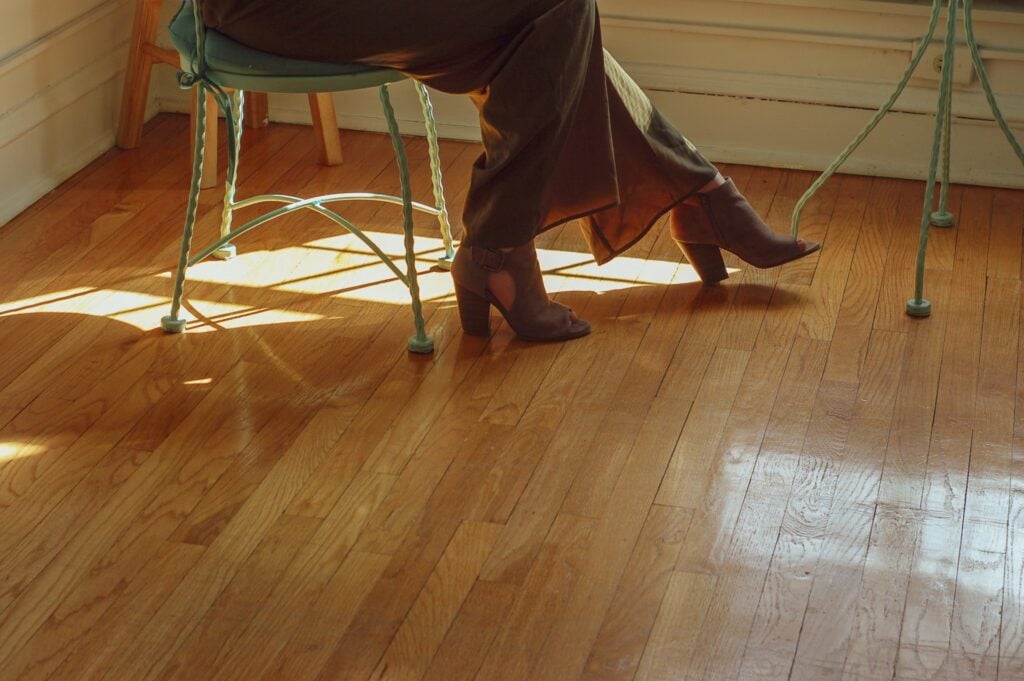
Which Type of Floor Has a Higher Return On Investment?
Unfortunately, this question is difficult to answer because many factors affect sales price. However, most people seem to prefer and pay more money for real hardwood floors, except in hot and humid environments.
Conclusion
Both wood and tile are excellent options to use in the home, and neither is technically better than the other. Tile is cheaper but more expensive to replace. It’s also more durable but creates a colder environment. Wood is warmer and promotes a more comfortable environment, but it’s much more costly to install. You can use wood almost anywhere, but it’s especially good in bedrooms and living spaces, while tile is better in humid environments like the bathroom and basement and in high-traffic areas like the kitchen.
Featured Image Credit: (L) Mizter_X94, Pixabay | (R) Michael Schwarzenberger, Pixabay
Contents

